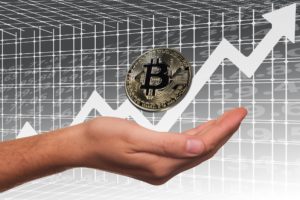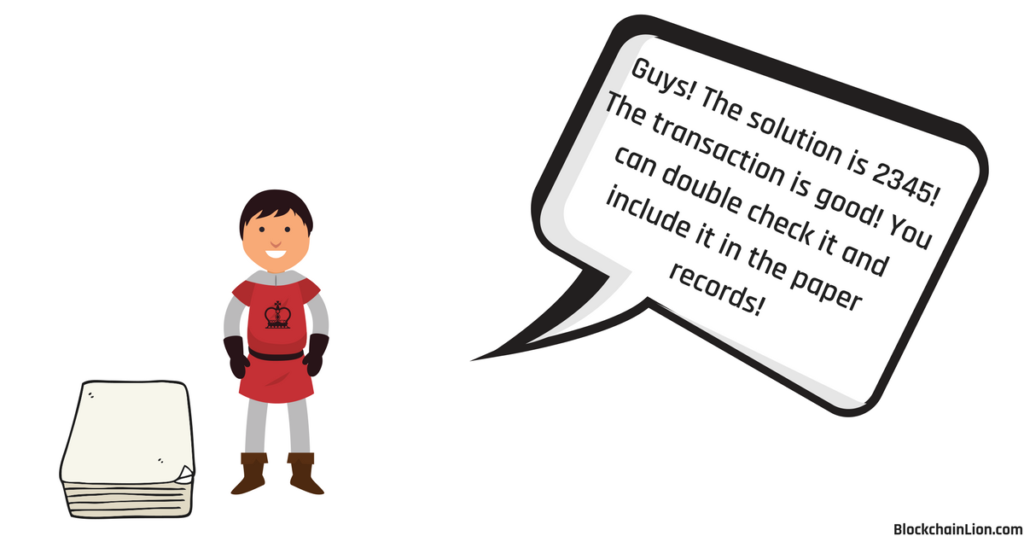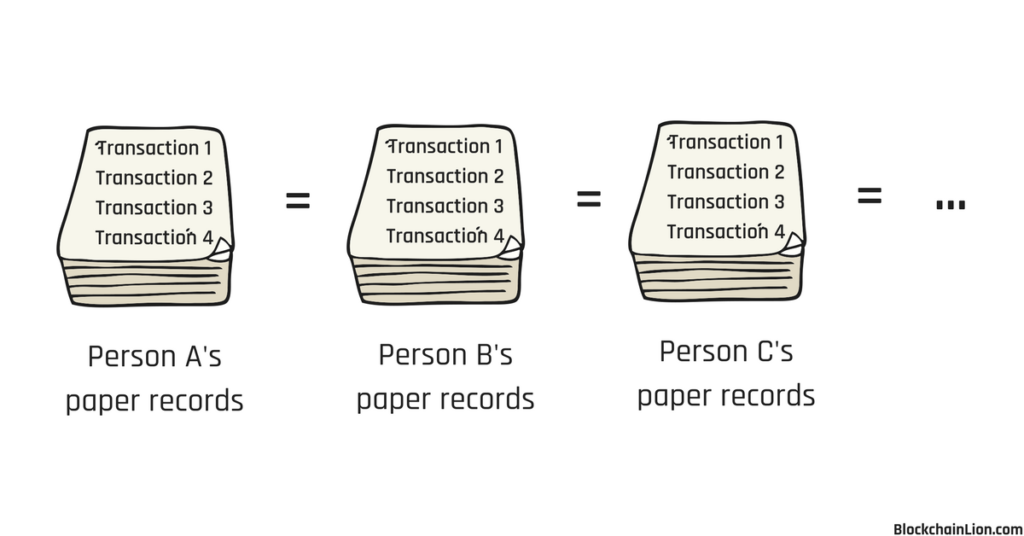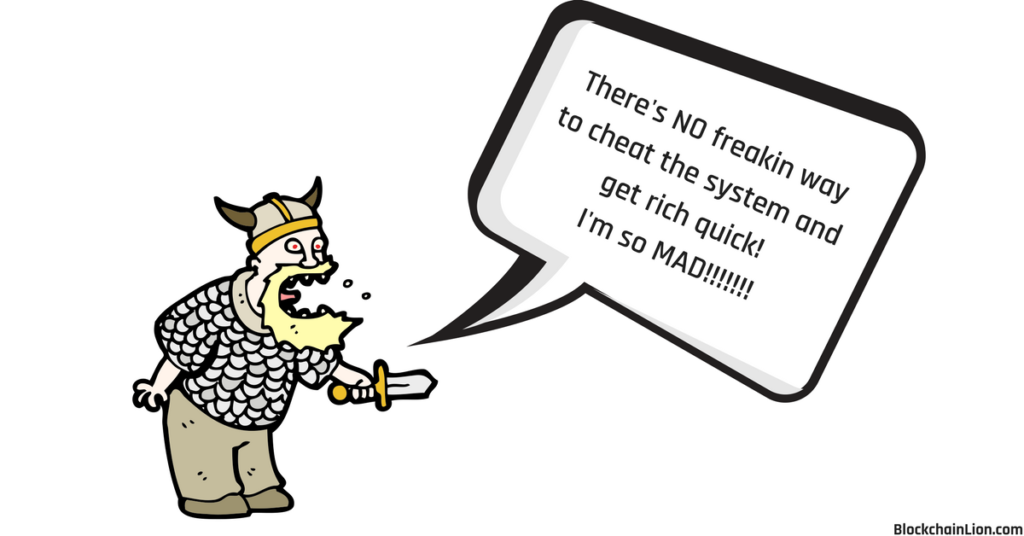Want to explain blockchain to parents or grandparents? It is not an easy task…
In this article I want to achieve something really important, which is being able to give you a series of concepts and examples that will allow you to explain blockchain to parents or even grandparents. If you can communicate these concepts to them, you will be able to also easily illustrate this new technology to your friends, your colleagues or anyone else.

But first let me give a brief background, and explain why it is something so difficult to grasp in the first place.
A few years ago, the blockchain technology was something known only by software developers, hardcore techies and computer enthusiasts in general. This because to find content and read about it you had to dig deep in niche forums or very specific techy websites.
In fact when I first discovered bitcoin and the blockchain technology in 2014, I was just a dude that really wanted to know how the internet works and explore more of the web ecosystem for the sake of my own burning curiosity.
At that time, if you talked about bitcoin to anyone not tech savvy, they would have looked at you like some crazy person, and dismissed everything you said with “ah its just some bulls**t nerd computer money thing, it will not go anywhere”.
After 2016, bitcoin and blockchain gained an enormous popularity, which was reflected in the dramatic increase in price per bitcoin. The biggest mainstream media agencies and blogs started writing an enormous amount of articles about this new technology, and the price of digital coins kept increasing as more and more people bought them.

The problem is that the majority of people and blogs only focus on the speculative and financial side of the digital currencies, which is fine, but there is more than that to talk about.
Very few individuals know that the real innovation in this area is Blockchain, which is the underlying database that powers these currencies, manages them and keeps them fully functional.
Blockchain is a very hard concept to explain because it requires a solid understanding of cryptography, computer software principles and a wide open flexible mind. If you would pick up a technical whitepaper you would be immediately be overwhelmed by all the mathematical/cryptographic details and computer science concepts.
So screw computers, they are way too hard, let me explain you the blockchain technology with easier brick and mortar examples. We will travel back to the Middle Ages and launch a cryptocurrency powered by blockchain called FedeCoin. It will be analogous to bitcoin, so I will apply the same concepts to understand bitcoin in a later section of the article.
Blockchain explained with no computers or complicated math terms
As I just mentioned, I will introduce the basic blockchain theories using no computer-related concept whatsoever. I will do this by creating a cryptocurrency called FedeCoin, and it will be usable in a small community of 10 people.
Imagine we are in a small medieval village, there are 10 people total living in this village, me included. As the king of the small village I want to launch a new coin currency that is fair, decentralized among us and has no central authority governing it. Which means no emperor can monopolize it.

Let’s take a step back one second. What does a currency need in order to exist in the first place? It needs a record, a solid record of balances and transactions. This way a person can be sure to have a certain balance, and can send part of that balance to someone else in order to buy goods or services.
The blockchain technology does exactly that, it performs record-keeping tasks in a decentralized way. It enables a currency to exist and be exchangeable among parties. Blockchain means chain of blocks, where each block contains records/data about the currency balances and transactions, all timestamped in chronological order. Let’s now go back to our example and apply this into our medieval village scenario.
I will gather every person in the village and ask everyone to be a record-keeper. This because I want the currency to be fully decentralized and because I want to give power and fairness to anyone. I do not want to put trust in a single person or institution, because that person/institution can be manipulative or become malicious and screw everyone over.
How do I achieve this decentralization? I will give everyone rules to agree on beforehand, such as how to record transaction uniformly and the obligation to be transparent and always tell everyone what happens. I will then give everyone an almost unlimited stack of paper. They will use these paper sheets to record every transaction that will happen from now on.

Now everyone knows and agrees upon the rules of the currency. They know how to write down transactions and how to communicate between each other. Everyone is ready to record the transactions as they will start happening when the coin will be soon launched.
What I just achieved is a solid record-keeping foundation for a currency to exist. I also created a peer-to-peer network, where everyone is equal and equipotent. Everyone will have the same papers and the same record keeping abilities that anyone around has.
Ready to “start” the network and release the currency? Let’s do it!
I will tell a person to write on the first sheet of paper the Genesis transaction. With this genesis transaction I will first assign to myself a sum of 1000 FedeCoins. This person will then tell to other people in the network that this transaction just happened and they will record it in their papers as well.
Genesis transactions in cryptocurrencies are needed to start the first block, and to start injecting some currency into the ecosystem so that it can start circulating.
After this genesis transaction was recorded by everyone the game changes a bit. From now on, rules say that in order to make a new transaction and send money, the record-keepers will need to solve a lengthy mathematical riddle that verifies that the transaction is valid. So for example, among many things, they will verify that that the sender has enough balance in his account to be able to send the transaction amount. They will check this by tracing the history of the coin transactions up to the genesis transaction.
Let’s start using these genesis coins and create a new transaction then! I decide to give John the blacksmith 10 FedeCoins for his work, so I will create a transaction of 10 FedeCoins from me to John the blacksmith.
I will immediately tell this transaction to a member of the network, which will tell everyone else in the network around him about this new transaction. At this point everyone starts racing to solve the mathematical riddle and verify that I have enough coins in my account to be able to send that amount to John the blacksmith.
Shortly, a person in the network will finish the mathematical riddle first, and will yell the solution to everyone. Everyone will stop solving the riddle and will instead check that this riddle was solved correctly. The riddle is made in a way that is hard to solve, but is very easy to verify if a correct solution was found.

The member of the network that solved the riddle is awarded with the privilege of including the transaction in the official record-keeping papers. He is also awarded with a sum of 5 FedeCoins for his work, which is an incentive for him to keep doing mathematical riddles for this network. Everyone else will include that transaction just verified in their official papers as well.
Coins now start to circulate around the village, and people start making more transactions to buy bread, water and cows with it. The members of the network never stop working tirelessly to solve mathematical riddles and verify transactions because they want the 5 FedeCoin rewards.
The list of transaction grows, and more and more papers are “chained” together creating a timestamped and solid history of payments/transactions.
At any point in time you can check the papers of each member and see that they will have the same exact history of transactions starting from the genesis one. This because they are transparent with each other and communicate all the time to agree on which transaction needs to be included and which one not.

Unfortunately there is a bit of evil in this world, and at some point in time somebody will get very greedy, and he will try to cheat the system to get rich. He thinks that he can just tell other members that he just received 100000 coins from Bob the carpenter and have that transaction included in the history, making him a wealthy man in a second.
So he actually goes on and tells a member of the network about this new transaction. The member of the network will listen to him, and immediately tell everyone else about this new transaction. The network members start once again the race to verify this transaction. By looking at all their record-keeping papers they notice quickly that there is no point in history where you can trace back that amount. The network members will reject the transaction and will not include it in the official papers.
The temptation to get rich quickly is too high, so that same malicious attacker will devise another smarter plan to get these 100000 FedeCoins.
He realizes that if he can craft a whole new chain of papers that go from the genesis transaction to many newer transactions where he receives a total 100000 coins, he can convince the network members to accept that chain of papers as the official FedeCoin record history. To do this he has to start to calculate all the mathematical riddles that the network did from the beginning.
He starts by getting a stack of papers, he includes the genesis transaction and does the first mathematical riddle. After some time he finishes and he includes another transaction and does the another riddle to prove it’s valid. He shortly realizes that he is alone, and cannot compete in any way with the work done by 10 network members that have spent days and days of brain power to create the real FedeCoin records. He has to give up, there is no way to beat the work done by 10 people.

He has to get his axe and go back chopping wood and sell it at the market to earn some FedeCoins. Or if he likes math riddles he can become a honest and cooperative member of the FedeCoin network and validate real transactions to try to earn the math riddle bonus. There is no way to cheat this decentralized system.
Moral of the story, the chain of paper records of FedeCoin grows more and more each day, and the more it grows the more it becomes impossible to manipulate it.
People love this new currency system because it’s transparent and fair. They make more babies and the village grows. Therefore the population grows too and more members can join the network, allowing more manpower to perform transaction checks and validations. This way the network becomes scalable to potentially any size.
Would you be a happy citizen of the village too? No emperor controls your coins, you are your own bank and you can at any time go speak to a member of the network to assure yourself that the system is moving as established by the initial rules. The rules are public, the transactions are transparent.
Side note: the important thing to know is that in a real modern blockchain-based currency you don’t see “Fede sent 10 FedeCoins to John the blacksmith” but you will see “account #113425 sent 10 FedeCoins to account #633484”, which guarantees a good degree of privacy.
This is blockchain, it is a transparent method to record information in a decentralized way without central authorities being able to govern it. A super popular application of the blockchain technology, as we just saw, is to create a decentralized currency.
Woah, such a blasphemy to explain blockchain without computer terms, but with this picture in mind we can now leave the middle ages and transition back into 2017, and draw parallelisms from this example with blockchain and bitcoins.
Blockchain explained with computers and modern technology
What we saw with FedeCoin was really the bitcoin protocol oversimplified. I admit the example was a bit overstretched… Obviously humans cannot really perform mathematical riddles 24/7 and at the same time coordinate such a complicated record-keeping. But it was easier to picture it that way, wasn’t it?
Now let computers come into play, and let them be the members of the bitcoin peer-to-peer network. They will flex their CPU processors using electricity and run 24/7 the software (rules) that fuels this highly coordinated decentralized record-keeping all over the world at impressive speed.
We saw in the previous medieval example that the blockchain was a chain of paper records containing timestamped transactions. In bitcoin the blockchain is a file on each computer that contains blocks of timestamped transactions also chained together.
In bitcoin the act of receiving new transactions, validating them and performing mathematical riddles to secure the blockchain’s data is called Mining. Bitcoin Miners are computers that have powerful hardware that allows them to perform these tasks fast. By performing these tasks efficiently, the blockchain quickly grows with new transactions happening all over the world in real time.

To use bitcoins I don’t need to necessarily become a member of the network, I only need a wallet software. Wallet softwares can be downloaded as apps or programs, or can be web based and used in a browser.
Through the wallet software I am able to create a new account. I can then receive and spend bitcoins using that account’s public ID. Just like you use your paypal ID to send/receive dollars.
Therefore When I check my bitcoin balance, I also use the wallet software. I log in the wallet using my private credentials, and the wallet software will simply ask a member of the bitcoin network if he can fetch the history of all the transaction with my account ID and give me a summary of unspent balances. The bitcoin network member will read the whole blockchain. He will finally sum up all the bitcoin transactions that I received and subtract the bitcoin transactions that I spent, and tell my wallet software the current balance that I still have available to spend.
Blockchain technology can be adapted to serve many, many other purposes other than digital currency. It can run smart contracts, it can manage healthcare operations, web security, voting, copyright, insurance, internet of things and a lot other different things.
How to buy cryptocurrency
You can buy cryptocurrencies by transferring your fiat currency to Coinbase and exchange it for bitcoin, ethereum or Litecoin. Use this link to get a 10 USD (8 EUR) bonus in bitcoin when purchasing 100 dollars (80 EUR) or more in cryptocurrencies.
If you want to purchase alternative cryptocurrencies, you need to make an account with crypto exchanges like binance, cryptopia or HitBTC. You initially transfer your bitcoins (or ethers or litecoins) from coinbase to one of the exchanges, and then use it to purchase any coin you want.
Conclusion
Let’s give a brief overview of the topics covered. I started with a simple example of blockchain, where we created a bitcoin-like currency powered by a non-computerized blockchain public paper ledger. This served as a way to imagine how record-keeping can be achieved in a decentralized manner, without any central authority.
After that, I moved into how that paper blockchain keeps living and how it cannot be manipulated even by the smartest adversary.
Then I fast-forwarded in time, removed the human miners, and explained why computers do that task better. Instead of focusing on the FedeCoin I started talking about the real bitcoin system and went over a bit more about mining. Then I touched upon how anyone can receive or send coins with a bitcoin wallet and finally where account balances actually come from.
I hope this gives a good picture of what a blockchain is, and how it is used to sustain a currency that is not owned by any institution or company. It is instead owned by anyone that chooses to abide by its rules.
When explaining this to your non tech savvy relatives, make sure you start from the non-computerized example, paying special attention at pointing out the decentralized aspect of the record-keeping activities. Then go on talking about the security aspect that protects the whole system from being attacked or manipulated. If they understand this, then introduce computers into the story, and tell them how they are much better at this task.
I hope that our beloved older relatives will be able to see the revolution and disruption that blockchain will bring into the world. It is also possible that some critical bug or particular issue will completely prevent blockchain’s mainstream adoption and kill it forever. It is a technology that it is still at its infancy and we still simply don’t know enough.
Thanks for reading. Drop a comment if you have a question or anything to point out, would love to hear your opinions.
